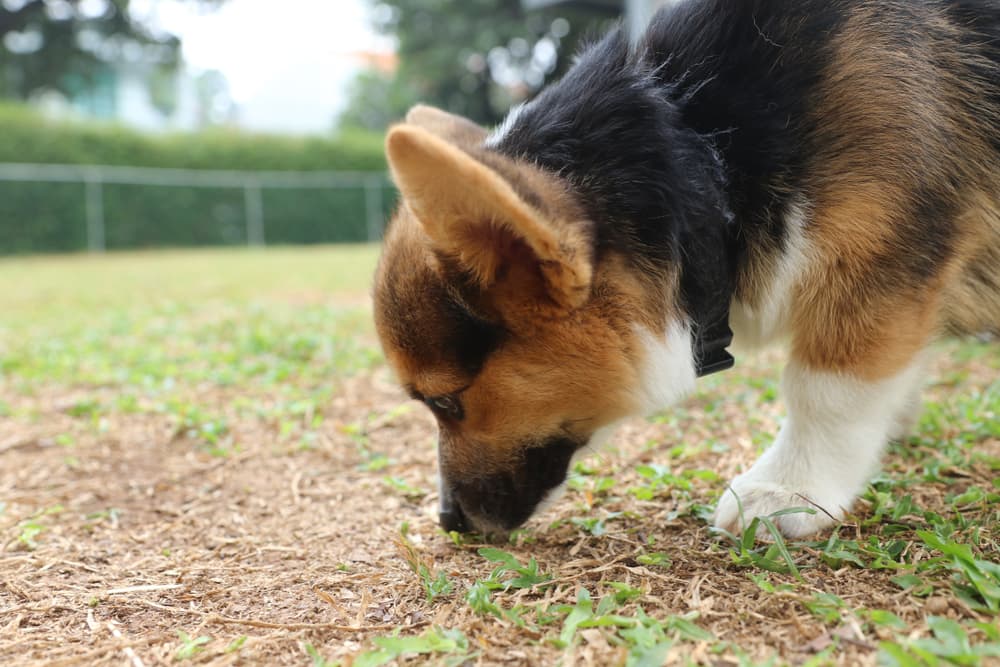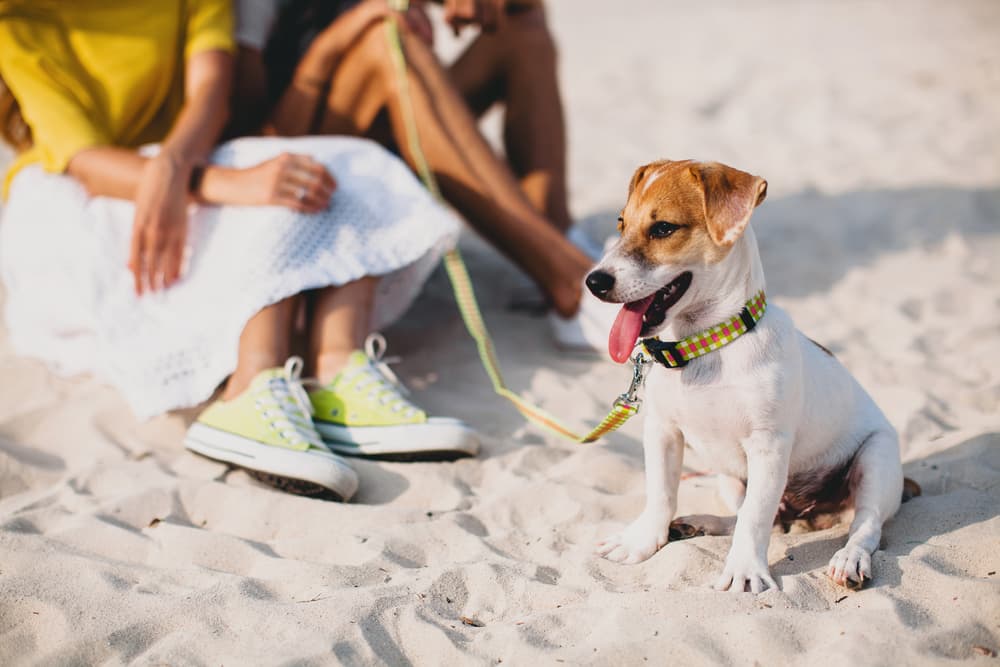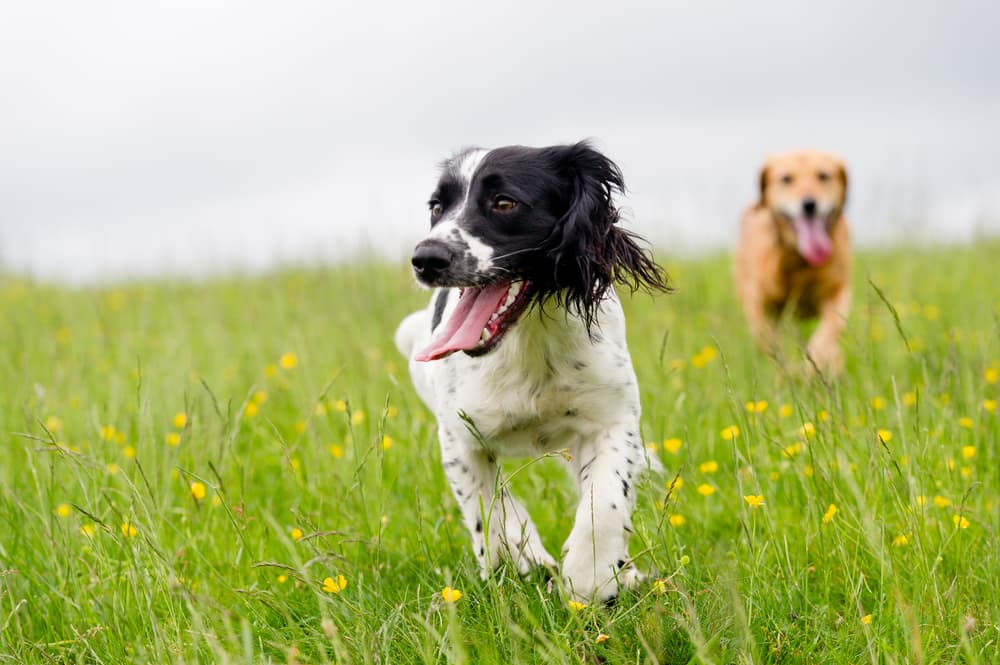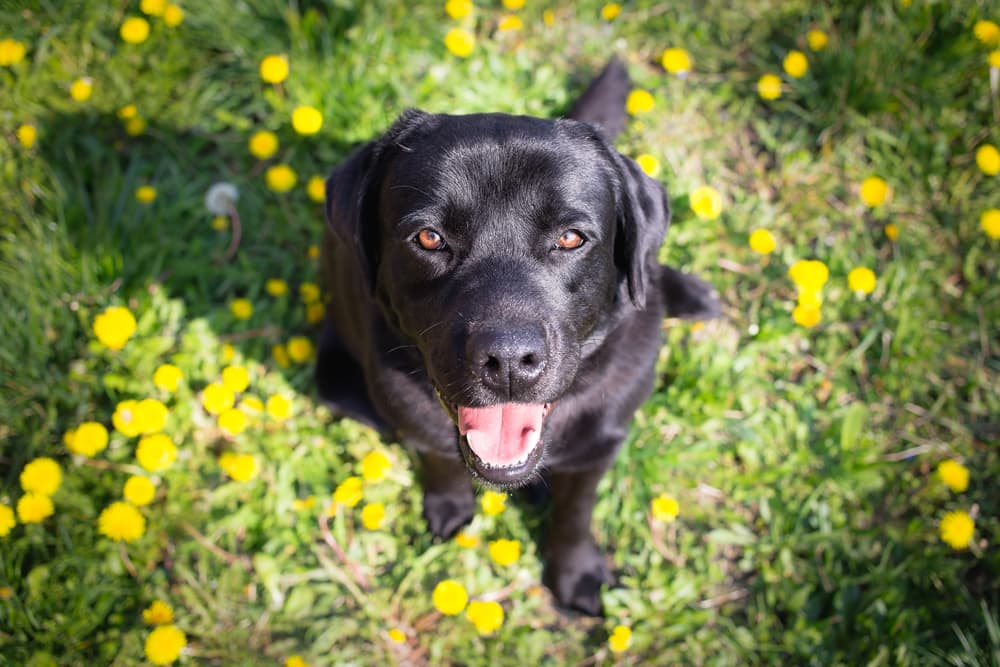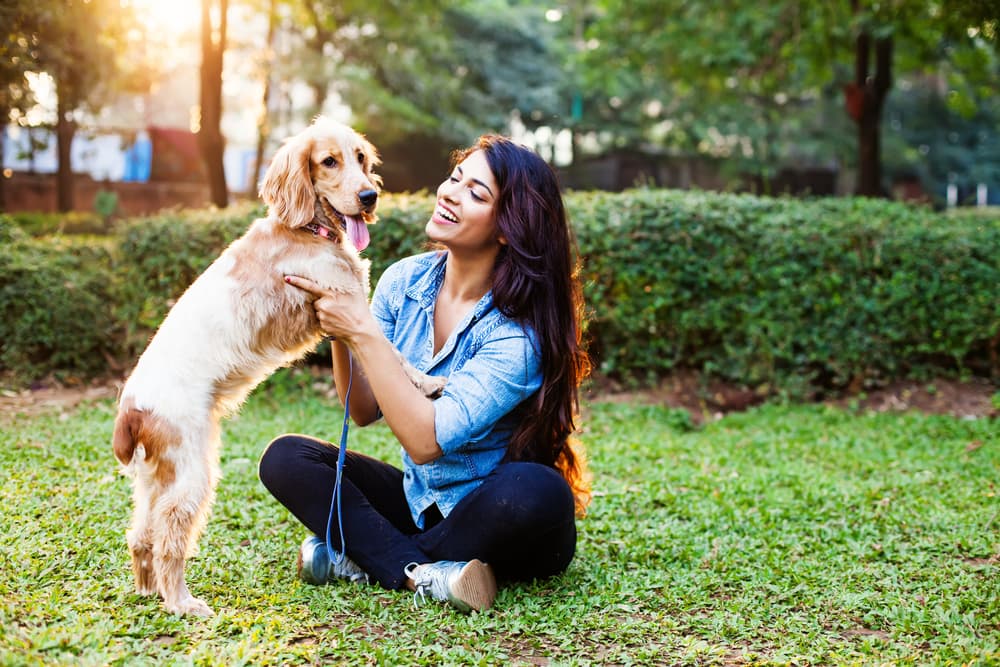Sponsored by Elanco
9 Hazards in Your Garden That Are Dangerous to Dogs
One of the biggest pleasures of being a pet parent is watching your dog play freely outdoors. But while fresh air, sunlight and exercise are all good for your canine companion, your garden can also be home to some scary dog dangers.
Knowing about these dangers for dogs, guarding against them and – perhaps most importantly – having a solid plan in place for when your dog gets into something he shouldn’t, is key to keeping him safe and sound.
Garden dangers for dogs vary greatly depending on where you live. If you live in a place where there are foxes or you regularly use pesticides or weedkiller for example, then these are likely the most dangerous environmental risks for your pet.
Invisible boundaries also leave dogs vulnerable, as they don’t prevent wildlife from entering your garden. Everything from foxes to mice can wander into a garden with an invisible boundary.
Here are nine of the top garden hazards that are dangerous to dogs.
9 Garden Dangers for Dogs
Toxic Garden Plants for Dogs

Toxic plants are one of the biggest dog dangers in your garden. Many pet parents don’t realise that the plants in their garden could be dangerous to dogs. As such, the first line of defence is education. It’s helpful to learn how to identify common plants that are toxic to dogs.
Lily of the valley, foxglove, oleander, kalanchoe and sago palm are among the plants that are poisonous to dogs, but there are many others to watch out for. Other toxic plants and toxic weeds for dogs include aloe, daffodils, chrysanthemum, gladiolas and peonies.
If you think your dog has ingested a toxic plant, get a sample or a photo of the plant to show your vet. If your pet is already demonstrating clinical signs of toxicity, such as an altered mental state, weakness or vomiting, get them to the nearest open vet immediately.
Fruits and Vegetables Not Safe for Dogs
Unfortunately, flowers and weeds aren’t the only type of greenery that pet parents need to look out for. Common garden fruit and vegetable plants can also be toxic to pets.
Ones to watch out for include tomato plants (leaves, stems and unripe fruit) and rhubarb (leaves). Onions, garlic and other members of the allium family are also toxic to dogs.
The ripe fruits are generally not a concern, it’s the greenery and seeds that can be toxic. Dogs and cats can suffer vomiting and diarrhoea, depression and weakness if they ingest the wrong plant.
Again, if you suspect your furry friend ate something dangerous, you should contact your vet for advice immediately.
Mushrooms

Not technically a plant, certain fungi including mushrooms can also be extremely poisonous to dogs. Pet parents should examine their garden once a week, especially after heavy rains, to pull out any mushrooms that may have appeared.
Ensuring your garden has proper drainage will help limit the growth of mushrooms and other potentially dangerous fungi.
Wild Animals

Wild animals such as badgers, rats, squirrels, foxes and even feral cats can be extremely dangerous to dogs if they meet face-to-face in your garden.
If you live in an area where wildlife is prevalent, do not leave your pet unsupervised when he is outdoors. Most dangerous wildlife will stay away from people, so if you are with your dog, an animal will most likely not pursue him.
Some animals such as rodents and rabbits can spread tapeworms to dogs (more on this next) and can easily enter backyards and gardens.
Worms

Keeping dogs parasite-free can be a challenge and any dog that spends time outdoors is at risk.
Among the parasites that dogs may encounter outdoors are several types of worms, including roundworm, tapeworm, and lungworm.
Dogs can be exposed to microscopic roundworm eggs in contaminated soil, tapeworm from infected rodents and rabbits in your garden, and lungworm from infected snails and slugs.
Fortunately, there are preventive measures pet parents can take against worms. Broad-spectrum parasite protection is an effective line of defence.
It’s a little off-putting, but here’s what pet parents need to know about each type of parasite:
Lungworms are worms that dogs can contract from ingesting infected snails and slugs, which thrive in our wet weather. They live in the blood vessels and cause coughing and unexplained bleeding.
Roundworms
Most pet parents are familiar with roundworms, as they are common and highly likely to be seen in puppies during their first few weeks with you. Roundworms can reach lengths of up to 15 cm in a dog’s small intestine (1).
Tapeworms
Dogs can contract several different species of tapeworms, either from ingesting infected fleas, small rodents, rabbits, livestock or other wildlife. When a dog eats an intermediate host that is carrying tapeworm eggs, the eggs can grow into adult tapeworms inside his intestine. It’s recommended that dogs in high-risk areas be treated at least every four to six weeks, and all dogs with contact with dogs outside of their family are treated for tapeworm every 3 months (1).
Ticks and Fleas
If your dog goes outside, chances are he will be exposed to ticks and fleas, which can carry disease. You can limit your dog’s risk of infestation with routine monthly prescription tick and flea medication. Ask your veterinarian about a tablet that protects against ticks and fleas.
If you find a tick attached to your dog after he goes outside, you should safely remove it or take him to your veterinary nurse for help.
Spiders, Stinging Insects & Snakes
Beyond ticks and fleas, spiders and stinging insects like bees and wasps can also pose a risk to dogs in your garden.
Spiders often find shelter in piles of wood so try to limit your dog’s access to them. In the UK, the only poisonous snakes are adders. They are not generally aggressive but may bite if they feel under threat from an overly inquisitive paw, especially earlier in the season when they’re coming out of hibernation and will be slow and less active. If you suspect your pet has been bitten by an adder you should get them to a vet straight away.
Bee and wasp stings are very common in the spring, especially for young, inquisitive puppies. Stings are usually on the muzzle or paw. Dogs may yelp or you may notice sudden, unexplained swelling or limping. These are best treated by a vet to take the swelling down and reduce the chance of anaphylaxis.
Poisons and Pesticides

While many pests pose a risk to dogs, chemical means of controlling those pests are also a concern. Keep anything toxic in a locked cabinet and resort to non-poison pest control methods, such as mouse traps, when possible. Pesticides and dogs are a dangerous combination. If your dog is exposed to pesticides, you should take him to a vet immediately.
Swimming pools
Swimming pools can pose a severe danger to pets, especially during the off-season. Make sure your pool is covered in cold weather and that older or frail pets are never out by the pool unsupervised.
For further information call Elanco Animal Health on +44(0)1256 353131 or write to: Elanco Animal Health, Lilly House, Priestley Road, Basingstoke, Hampshire, United Kingdom RG24 9NL. Elanco is a trademark of Elanco or its affiliates © 2020 Elanco or its affiliates. PM-IE-20-0068 Date of preparation 03/20.
REFERENCES:
- European Scientific Counsel Companion Animal Parasites. Worm Control in Dogs and Cats: ESCCAP Guideline 01 Third Edition – July 2017 [PDF file]. Retrieved from http://www.esccap.org/uploads/docs/0x0o7jda_ESCCAP_Guideline_01_Third_Edition_July_2017.pdf

